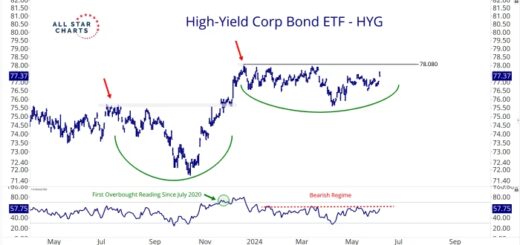Rising Tide: Wall Street’s ‘Fear Gauge’ Surges Amidst Market Volatility Revival
Over the past week, there has been a significant increase in implied volatility across stocks, bonds, and currencies, marking a departure from the previous period of relative calmness.
For instance, the Cboe Volatility Index (VIX), often seen as Wall Street’s “fear gauge,” surged to 19.56 on Tuesday, reaching its highest level since October 31st. This was accompanied by notable upticks in volatility indicators tracking options linked to Treasury bonds and major G-10 currencies.
The ICE BofAML MOVE Index, which measures implied volatility in Treasurys, rose by over 40% since March 27th to hit 121.15 on Monday, its highest level since January 3rd.
This surge in volatility reflects increasing uncertainty among investors regarding potential interest-rate adjustments by the Federal Reserve. Federal Reserve Chair Jerome Powell’s recent comments hinting at a pause in rate cuts have added to market jitters.

Traders now anticipate preemptive actions from entities like the European Central Bank, which could lead to higher Treasury yields and strengthen the U.S. dollar throughout April.
The rising dollar has also pushed the JPMorgan G-7 Volatility Index to its highest level since January, signaling increased fluctuations in major currency pairs.
Previously, the market appeared calm, but some analysts noted signs of complacency. Unexpected events triggered significant market reactions, contrary to the prevailing tranquility.
To manage the risks associated with heightened volatility, traders are increasingly turning to options-market hedges. Demand for such hedges has surged across various asset classes and currency pairs.
Notably, VIX-linked option contracts saw substantial trading activity, particularly VIX options, which experienced their busiest day in over six years. Traders are actively seeking protection against sharp declines in stock prices through VIX-linked calls.
The increase in bond market volatility also raises concerns about the outlook for equities. Higher bond volatility typically signals an unfavorable environment for stocks. Additionally, fluctuations in credit spreads, especially on high-yield bonds, tend to correlate with movements in the VIX, potentially indicating future declines in the stock market.
Currently, U.S. stocks show mixed trading patterns, with the S&P 500 and Nasdaq Composite facing the possibility of a fourth consecutive day of losses, while the Dow Jones Industrial Average looks set to finish higher. Meanwhile, Treasury yields have decreased, and the U.S. dollar index has retraced slightly from its recent peak.




